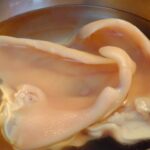Bedding, duvet covers, and pillowcases often have stubborn stains and yellow discoloration. Therefore, it’s important to wash them properly to prevent the formation of mold and unpleasant odors.
To remove these stains, some people resort to using bleach. However, excessive use of harsh chemicals can lead to fabric deterioration and color fading. If the bleach is not thoroughly rinsed out, it may also cause allergic reactions and leave an unpleasant smell.

Try using vinegar instead of bleach to clean your bedding, duvet covers, and pillowcases. (Illustrative image)
As an alternative to bleach, you can use vinegar to effectively clean your bedding, duvet covers, and pillowcases. Vinegar is a powerful agent that can tackle even the most stubborn mold and stains.
The process of washing bed linens, duvet covers, and pillowcases is straightforward. Simply dilute your detergent with warm water and add about two cups of vinegar. Soak the items for 20 minutes, or longer if they haven’t been washed in a while. Then, rinse them with warm water.
If any stains or discoloration remain, apply undiluted vinegar directly to the affected areas, scrub gently, and then wash with clean water.
Notes on washing bedding, duvet covers, and pillowcases:
– Wash duvet covers and pillowcases regularly, ideally once or twice a week.
– Sun-dry pillow fillings frequently to eliminate bacteria and mold.
– Sort items by fabric type and color to prevent color bleeding and ensure appropriate washing times.
– Alternatively, you can use alcohol instead of vinegar to effectively clean duvet covers and pillowcases.



































